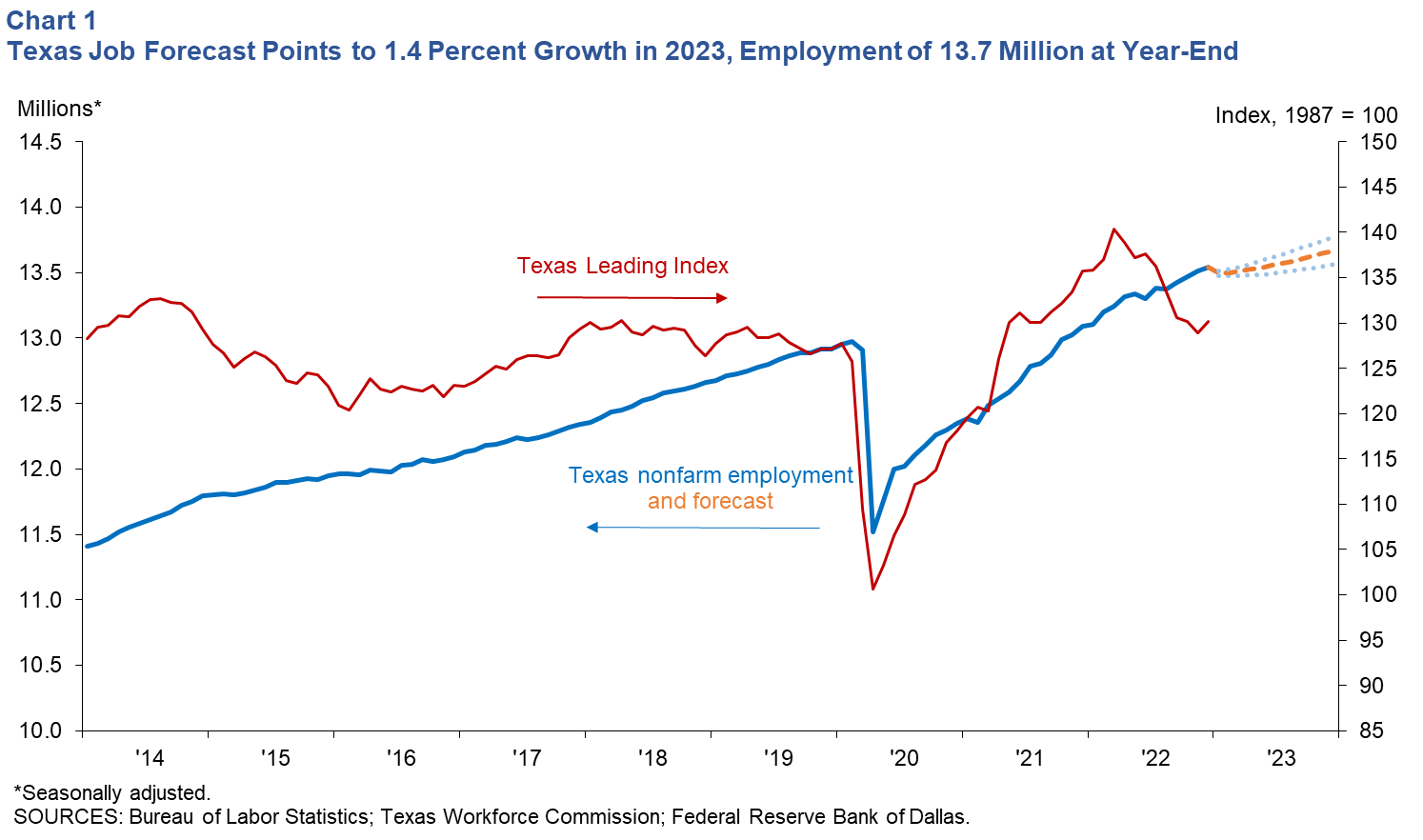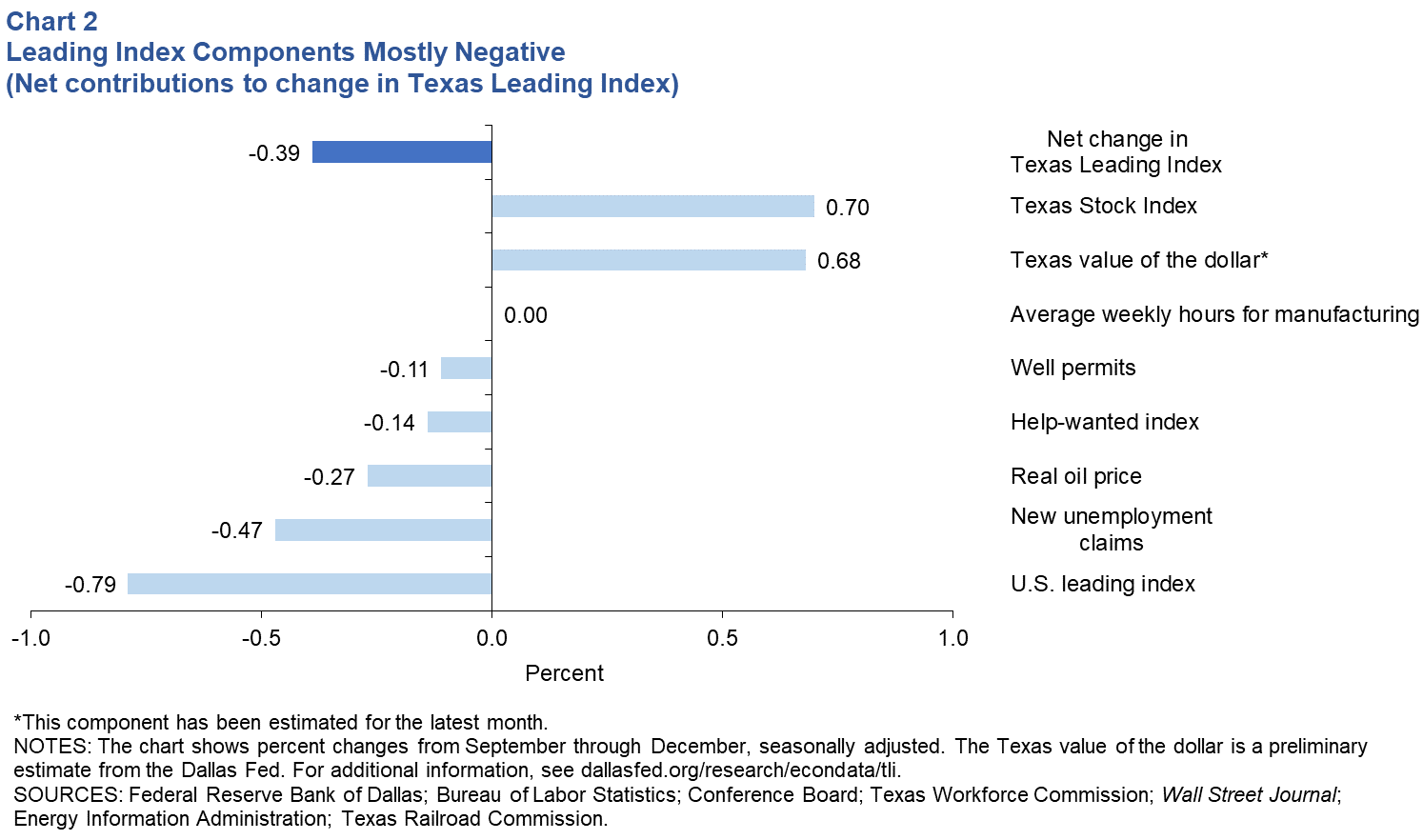Texas Employment Forecast

February 3, 2023
The Texas Employment Forecast indicates that jobs will increase 1.4 percent in 2023, with an 80 percent confidence band of 0.7 to 2.2 percent. The forecast is based on an average of four models that include projected national GDP, oil futures prices and the Texas and U.S. leading indexes. The forecast suggests that 193,000 jobs will be added in the state this year, and employment in December 2023 will be 13.7 million (Chart 1).
Texas employment grew 2.3 percent month over month in December after rising a revised 4.3 percent in November. On an annual basis, Texas job growth slowed to 3.5 percent in 2022 after rising 6.0 percent in 2021. “The state added over 452,000 jobs in 2022, reaching employment of 13.5 million; job gains were broad-based across all sectors,” said Luis Torres, Dallas Fed senior business economist. “Strength in 2022 was led by employment increases in energy, leisure and hospitality, and information services.”
Despite a healthy labor market, the Texas Leading Index continued its decline in the three months through December (Chart 2). Most of the index components were negative, with weakness led by a decline in the U.S. leading index and an increase in new claims for unemployment benefits. Declines in the real price of West Texas Intermediate oil, the help-wanted index and well permits also dragged on the index. Increases in the Texas Stock Index and declines in the Texas value of the dollar were positive contributors, while the average weekly hours worked component was flat and hence did not affect the index.


Next release: March 10, 2023
Methodology
The Dallas Fed's Texas Employment Forecast projects job growth for the calendar year and is estimated as the 12-month change in payroll employment from December to December.
The forecast is based on the average of four models. Three models are vector autoregressions where Texas payroll employment is regressed on the lags of West Texas Intermediate (WTI) oil prices, the U.S. leading index and the Texas Leading Index. The fourth model is an autoregressive distributed lag model with regression of payroll employment on lags of payroll employment, current and lagged values of U.S. GDP growth and WTI oil prices, and current Texas COVID-19 hospitalizations. Forecasts of Texas payroll employment from this model also use as inputs forecasts of U.S. GDP growth from the Federal Reserve Bank of Dallas, WTI oil price futures and projections of hospitalizations from the Institute for Health and Metrics Evaluation. All models include four COVID-19 dummy variables (March–June 2020). The models also incorporate a forecast of third- and fourth-quarter 2022 benchmark revisions to state payroll employment. Benchmarking aligns job growth in the payroll survey with that in the much-larger Quarterly Census of Employment and Wages.
For additional details, see dallasfed.org/research/forecast/.
Contact Information
For more information about the Texas Employment Forecast, contact Luis Torres at luis.torres@dal.frb.org.